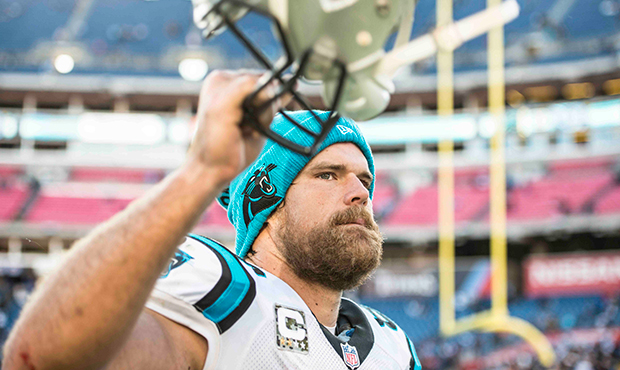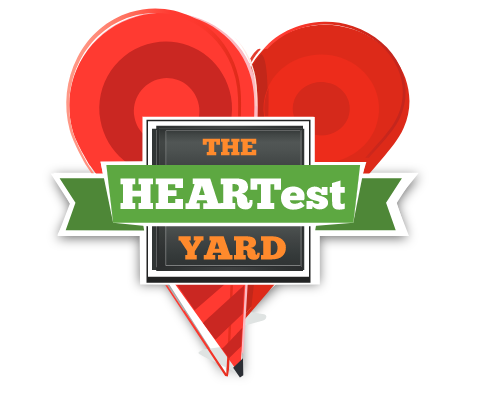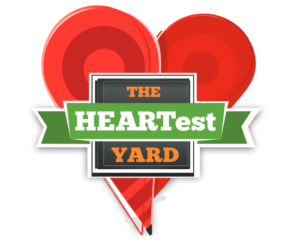The heart of Carolina Panthers star Greg Olsen

Pro Bowl tight end Greg Olsen is the Carolina Panthers’ nominee for Walter Payton Man of the Year this season because of his charitable works.
That sounds like a big thing, and it is, but it is easier to understand if you break it up into a lot of smaller things like this one.
Greg Olsen is surrounded before a Panthers game by his wife Kara and, from left, their three children Tate, Talbot and T.J. It was T.J. Olsen’s congenital heart defect that prompted the Olsen family to start The HEARTest Yard Fund at the Levine Children’s Hospital.
Luann Register first met Olsen at Levine Children’s Hospital in Charlotte in 2014. She was crying at the time.
Luann and her husband, Brian, had thought until the day of his birth that their son, Brantley, was going to be a normal baby. Nothing unusual had shown up on her ultrasounds or during her pregnancy.
But Brantley was born with hypoplastic left heart syndrome (HLHS), a rare congenital birth defect that affects blood flow through the heart. Less than 24 hours after his birth, Brantley was in emergency surgery. And that was just the start of the grueling, multi-surgery ordeal that all families who have a child with HLHS must go through as their doctors literally try to mend broken hearts.
It was four days later that the Registers – overwhelmed with the complexity of their newborn son’s health issues – had an impromptu meeting with Olsen and his wife, Kara, at Levine.
3
“He talked to us as Greg Olsen the dad, not as Greg Olsen the football player,” Luann Register said. “And he has a son who has HLHS, just like our son, and he and Kara told us everything we could expect to happen. They said we were strong and that we were going to be OK.”
The Olsens had never met the Registers before that day in February 2014, but they have kept in touch with them ever since through social media, birthday parties and hospital visits. And the HEARTest Yard Fund that Greg Olsen set up for families with HLHS who are treated at Levine – the one that provides free in-home nursing care to affected families in the critical months between the child’s first and second surgeries – gave the Register family some peace of mind as well as hundreds of hours of free nursing care for Brantley once he came home from the hospital.
“If not for the HEARTest Yard and that program, I would have had to quit my job, or my husband would have,” Register said. “And then we probably would have had to sell our house because we wouldn’t have been able to afford it. And then on top of that, we would have lost a good insurance provider. So, as we’ve told Greg and Kara numerous times, ‘You guys saved our lives.’ ”
About two dozen families in the Carolinas so far have benefited from Olsen’s program. It provides about $25,000 to $30,000 worth of nursing care to each family affected by HLHS during the first six months of the baby’s life. And while the money is nice, what makes the program memorable is the Olsens’ constant presence.
Olsen always seems to be there for the Panthers and quarterback Cam Newton. He led 15-1 Carolina, which hosts Seattle on Sunday in a 1:05 p.m. NFL playoff game, with 77 catches and 1,104 receiving yards. He made his second straight Pro Bowl.
But he’s also always there for the HEARTest Yard’s fundraisers. Or he’s visiting children with congenital heart defects at the hospital. Or he’s wearing a tutu on “Tutu Tuesday” at Levine just because the registered nurses were already doing it to boost the kids’ morale that day and had dared him to do so.
To Olsen, it’s a matter of “paying forward” all the good care that T.J. has received at Levine. He said he considers it an honor, not an obligation, to try to help new families who find themselves in the same situation the Olsens did in 2012, when T.J. was first diagnosed with HLHS.
Said Kim Ortmayer, a registered nurse at Levine who has frequently treated Olsen’s son T.J. during his hospital stays: “Greg is really just a normal person when he’s here. He’s a dad. I’ve seen him belting out songs from ‘Frozen.’ I’ve seen him upset when something is happening with T.J. I’ve seen him sleep on these uncomfortable recliners we have, night after night. I’ve seen him sit on the floor with a parent who has just lost their kid – just talking to that Dad and hugging him. He just wants everyone to do well.”
Said Olsen: “There’s something about that comfort, when you find yourself with those long nights at the hospital. You have these tough days when things seem to just be dragging, and it’s hard finding people who can really relate. Because unless you actually go through it, it’s hard to grasp what it’s like to see your kid go through something like that. At that point, we’re just parents, all in the same situation, all coming through those hospital doors with questions – all trying to comfort and help one another.”
‘The most critical time’
Olsen had his eyes opened by HLHS and all that T.J. – who is 3 1/2 years old and doing very well – has undergone. But his charitable foundation was actually born several years before T.J. was.
Olsen’s mother, Susan, had a bout with breast cancer while Olsen was still in high school in New Jersey. Olsen and his family established “Receptions for Research” – which originally raised money for breast cancer research only – in 2009, while Olsen was still playing for the Chicago Bears.
In what may have been the best trade in franchise history, the Panthers swapped a third-round pick to Chicago for Olsen in 2011. Not only did he bring his sure hands with him – Olsen since became the Panthers’ first Pro Bowl tight end since Wesley Walls in the 1990s – he brought his foundation, too.
The HEARTest Yard Fund now operates under the Receptions for Research umbrella. It has raised more than $650,000 with fundraisers that include golf tournaments, country music concerts, a “Star Wars”/Panthers mashup T-shirt nicknamed “Purrbacca” and a partnership with Dale Earnhardt Jr. called “Weekend with the 88s” (both Olsen’s jersey and Earnhardt’s race car bear that number).
T.J.’s diagnosis and subsequent surgeries added more urgency to Olsen’s community efforts – and made his life busier. There have been periods during T.J.’s hospital stays where Olsen spent six nights every week at the hospital, going straight from Levine to his day job 2 miles away at the Panthers’ stadium. He has never missed a regular-season game because of T.J.’s surgeries, but the Panthers have allowed him to alter his hours however he needs to do so he could be at T.J.’s side when he needed to be.
“Greg is a professional in every sense of the word,” Panthers coach Ron Rivera said. “Football is what he enjoys doing, it’s what he loves to do as his distraction in life. If you look at all the things he and his family have gone through, the one haven he has had is to come here to the stadium.”
The HEARTest Yard’s key initiative – private in-home nursing care – came as a result of Olsen and his wife wishing that were available under their own insurance plan and realizing that it wasn’t available unless they paid for it.
“The way this all came to be was when we brought T.J. home from his first surgery,” Olsen said. “We knew that was going to be the most critical time in his life. All the doctors had made that very clear, that the window between the first and second surgeries (the first six months of an infant’s life) is the most critical time in their development.”
The Olsens already had an older son, Tate. T.J. also has a twin sister, Talbot, who has no serious health issues. With three young children, they thought in-home care was the way to go, and when they couldn’t get insurance to cover it, they simply paid for it. Olsen, after all, makes millions as an NFL star.
“We had a nurse who lived with us for about six months,” Olsen said. “She was part of our family. She ate with us, stayed with us, helped take care of the kids – it was incredible. But obviously, it’s not cheap.”
So the Olsens talked to hospital officials and decided to establish a fund with the goal of giving every HLHS family up to 460 hours in free in-home nursing care between the first and second surgeries (the third and final HLHS surgery is normally not performed until the child reaches age 3).
“We wanted to set up a structure that provided an in-home nurse, free of charge, to these families,” Olsen said, “because we found that was such a powerful tool and resource in our own lives.”
‘A lot of people underestimate him’
Kari Crawford-Plant, a pediatric nurse practitioner at Levine Children’s Hospital, grew close to the Olsen family during their weeks at the hospital. She first met them in 2012 shortly after T.J.’s diagnosis – “it wasn’t the best meeting, because they were both sobbing,” she said – and has since become the go-to person for HEARTest Yard families. Crawford-Plant has also seen Olsen evolve from a concerned father into a forceful advocate for families affected with congenital heart defects.
“I think a lot of people probably underestimate him,” Crawford-Plant said. “He is well-versed in this. When he sits down in a meeting with us, he’s got his iPad, and he’s got his questions and he’s ready to go.”
Added Ortmayer, the Levine nurse: “A lot of people might look at Greg’s age and go, ‘Oh, he’s only 30.’ But the level of maturity that both he and Kara bring to the table is amazing. This is a guy who could run a company. He’s direct. He knows what he wants and knows how to get it.”
Olsen’s advocacy has extended well beyond HLHS families. In 2013, he spoke to the N.C. House of Representatives in Raleigh, telling them T.J.’s story and lobbying for a bill to require infant testing for blood oxygen levels. The pulse oximetry test helps detect heart defects (not just HLHS) even if there are no visible symptoms in the baby. The bill became an N.C. law in 2014.
Olsen also was surprised when he heard that the Levine Children’s Hospital did not have a signature event to raise money and decided to change that by founding and co-chairing an annual fundraiser.
“That one is entirely for the hospital,” Olsen said. “Our foundation does not benefit from it. But we felt the children’s hospital needed a flagship event. They had the meetings on Tuesdays (the Panthers’ usual off day) so I could attend. We ended up doing the first one at Quail Hollow, with (actor) Vince Vaughn as the surprise emcee. It was really cool.”
That event raised more than $500,000. Olsen was so deeply involved that he helped pick out the table linens.
Award to be presented Feb. 6
The Walter Payton Man of the Year award will be announced Feb. 6, the night before the Super Bowl. The past two winners are already on the Panthers’ roster – cornerback Charles Tillman and linebacker Thomas Davis.
Said Davis: “I hope Greg wins. I just know that Greg is a person who is highly motivated to bring awareness to the cause of heart disease in young kids because of T.J., and he puts his all into it. He’s had to endure all of these issues as a parent, and he’s very hands-on with what he’s trying to do. That’s what makes it so meaningful.”
As for Brantley Register, he will turn 2 years old in February. Like all HLHS children, at some point in his life he will likely need a heart transplant. But after a year full of tears, feeding tubes, wires and multiple surgeries in 2014, Brantley didn’t need a single surgery in 2015. He goes to day care and loves it. He has a healthy baby brother he has nicknamed “Bubba.” And he wears his No. 88 Greg Olsen jersey with giggly pride.
“Our lives were all turned upside down for a long time,” Luann Register said. “The Olsens helped us turn them back the right way.”
Olsen says he doesn’t care much if he wins the “Man of the Year” award, but what he does care about is accelerating the foundation’s reach and its growth.
“We don’t have full-time employees,” Olsen said. “We don’t have people who go out and fund-raise for us. We do it all ourselves. I think people appreciate when they get in touch with us or want to sponsor an event that they are going to hear directly from me. This is not just something that we’re doing because we feel we’re obligated, or because every athlete or anyone who has a platform should do something.
“We’re not doing it for that. We’re doing it because this makes a difference.”
Scott Fowler: sfowler@charlotteobserver.com, @scott_fowler




